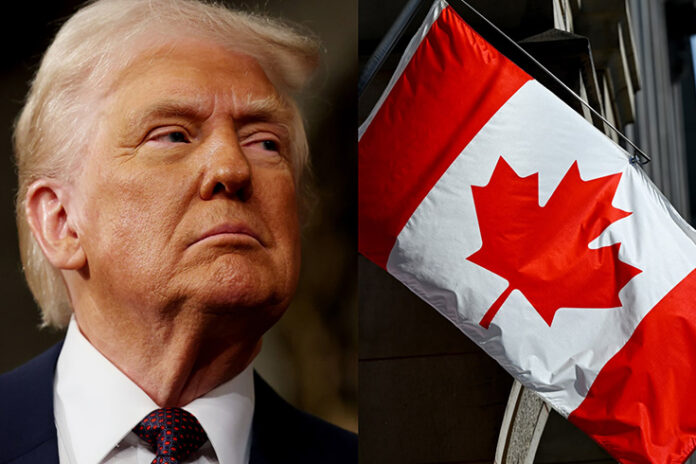Trump’s Tariffs Unlikely to Trigger Sharp Price Increases in Canada, Economists Say—Some Products May Even Become Cheaper
Experts indicate many concerns persist, yet rapid inflation in consumer products is likely not one of them.
As the United States engages in a significant trade dispute with China, sharply driving up prices south of the border, Canadians are increasingly concerned about how this may affect their financial well-being.
While economists caution that Canada’s economy could experience slower growth due to broader global uncertainty sparked by former U.S. President Donald Trump’s aggressive tariffs, they note that significant price increases in electronics, clothing, food, appliances, and other consumer items are unlikely to occur immediately.
Why Some Canadian Prices Could Drop
RBC economist Claire Fan emphasizes that the Canadian government’s retaliatory tariffs on American products were carefully selected to minimize direct impacts on Canadian consumers, thus helping keep inflation close to the Bank of Canada’s target rate of two per cent by the end of 2025.
“Canadian pricing structures will predominantly reflect how effectively global supply chains adapt, the stability of the Canadian dollar, and corporate decisions regarding whether to pass increased costs onto consumers,” Fan explained.
William Huggins, Professor of Finance and Business Economics at McMaster University, suggests that in the short term, prices for certain consumer goods could actually fall. The United States has imposed 145 per cent duties on Chinese goods, significantly reducing China’s access to the American market and potentially creating an oversupply scenario globally.
“We might witness lower prices due to aggressive discounting from Chinese manufacturers attempting to redirect products to other markets, including Canada,” said Huggins.
While Canada’s anti-dumping regulations will protect certain domestic industries, Canadian consumers stand to benefit from lower-priced clothing, furniture, and electronics from China—sectors not robustly produced domestically.
Long-Term Risks and Currency Strength
However, Huggins cautioned that the benefits might be short-lived. If decreased U.S. demand leads China to reduce its production capacities significantly, prices could eventually climb due to tighter global supply. Additionally, logistics costs could rise for Canada, as the country will no longer be able to rely on shared logistics efficiencies derived from high-volume U.S. shipments.
Recent gains in the Canadian dollar also provide a buffer against inflation by reducing the cost of imports. The loonie recently strengthened, reaching a five-month peak at 72 cents (U.S.), partly due to depreciation in the American dollar.
Shaun Osborne, Chief Currency Strategist at Scotiabank, predicts further strengthening: “We anticipate continued short-to-medium-term strengthening of the Canadian dollar, which should act as a stabilizing force against inflationary pressures.”
Given the current trade conditions, Osborne forecasts a general slowdown in global economic growth, reducing demand pressures and helping keep inflation “stable or potentially lower.”
“A steady Canadian dollar coupled with subdued global demand would help manage domestic price levels,” Osborne concluded.
Ultimately, the extent of price fluctuations will largely hinge on how businesses choose to manage tariff-related cost increases.
Simeon Siegel, Retail and E-commerce Analyst at BMO Capital Markets, highlights that price increases will be tactical and targeted rather than widespread.
“When faced with increased costs, companies have three main options: raising prices, cutting expenses in other areas, or absorbing the higher costs themselves,” Siegel explained. “Most retailers are highly cautious about losing customers and will avoid blanket price hikes. They will instead strategically adjust prices, carefully balancing profitability and customer retention.”









